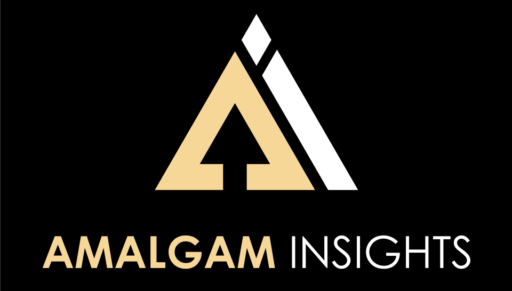FOR IMMEDIATE RELEASE
For more information:
Steve Friedberg
MMI Communications for Amalgam Insights
484.550.2900
AMALGAM INSIGHTS: Service mesh market continues to grow, even as “the market is not as mature as the technology”
New research report finds while service mesh is “a required part of a system based on microservices,” platform battle causes “conflict and confusion”
BOSTON, May 15, 2019 — A new SmartListMarketGuide™ from industry analysts Amalgam Insights finds that the market for service mesh technologies and products is still evolving, saying service mesh increasingly represents a required part of a system based on microservices and is likely to be as standard as a web server in an Internet application.
Research Fellow Tom Petrocelli reports, “As is often the case with a developing market, there is an abundance of vendors, open source projects, and other resources available to system architects looking to implement a service mesh in a microservices architecture.” His new SmartList Market Guide complements Amalgam Insights’ “Service Mesh Primer,” which was issued last month.
Service mesh has become more important to companies seeking to modernize their IT infrastructure. Petrocelli notes that service mesh is highly scalable, resilient, and easier to update minimizing the amount of processing affected by a system failure and allowing for systems to scale up without losing resiliency. It also costs less to scale since microservices make better use of unused system capacity.
But the report cites an ongoing “unfortunate rivalry” between the Istio and Linkerd platforms. Companies like IBM, Red Hat, Google and Lyft are supporting Istio, with the Linux Foundation’s CNCF leading open source development efforts for Linkerd, which is championed by Buoyant and Envoy. Petrocelli says while neither side is currently winning the fight, Istio’s alignment with major organizations “is causing supporting vendors to pour resources into Istio/Envoy which practically ensures that Istio/Envoy will succeed. The concern that Amalgam Insights has with this arrangement is that the control plane (Istio) is not open governance. This calls into question its future independence.”
Petrocelli concludes that “the ongoing Istio versus Linkerd debate will act as a drag on the market. It introduces unnecessary conflict, confusion, and distraction. Not only is this unfortunate but unnecessary. There is plenty of headroom for many vendors and approaches.” Nevertheless, he says emerging innovations like a service mesh orchestrator “will be especially important for multi-cloud and hybrid environments that may be running service meshes with different technology.”
Companies prominently mentioned in the report include NGINX and Aspen Mesh, which are now part of Vamp, F5, Solo IO, Buoyant, A10, Red Hat, HashiCorp and IBM.
Petrocelli’s report is available for download at no charge for one week at www.amalgaminsights.com; after that, it will be available for individual license for $500 after that, with vendor licensing available.
# # #
About Amalgam Insights
Amalgam Insights (www.amalgaminsights.com) is a community of visionaries focused on maximizing the business outcomes of technology. We focus on the trends, findings, and strategies that translate leading data, cognitive, and coding technologies into professional value.
Tactically, AI focuses on the following practices that augment and increase the value of technology: Technology Expense Management, IT Financial Management, FinOps, Enterprise Performance Management, DevOps, Blockchain, Open Source Development, Enterprise Training and Learning Development, and Data Science and Machine Learning.

 This past week at Red Hat Summit 2019 (May 7 – 9 2019) has been exhausting. It’s not an overstatement to say that they run analysts ragged at their events, but that’s not why the conference made me tired. It was the sheer energy of the show, the kind of energy that keeps you running with no sleep for three days straight. That energy came from two sources – excitement and fear.
This past week at Red Hat Summit 2019 (May 7 – 9 2019) has been exhausting. It’s not an overstatement to say that they run analysts ragged at their events, but that’s not why the conference made me tired. It was the sheer energy of the show, the kind of energy that keeps you running with no sleep for three days straight. That energy came from two sources – excitement and fear. Amalgam Insights has just published my highly anticipated SmartList Market Guide on Service Mesh. It
Amalgam Insights has just published my highly anticipated SmartList Market Guide on Service Mesh. It 
